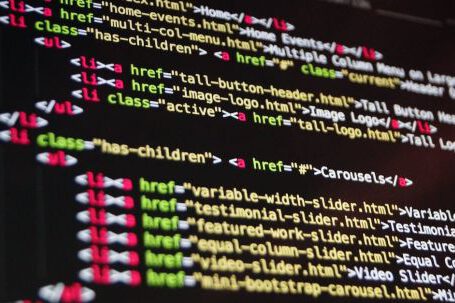In recent years, remote work has become increasingly popular, with more and more individuals and companies embracing the flexibility and convenience it offers. However, while remote work has many advantages, it also comes with its fair share of cybersecurity risks. In this article, we will explore some of the main cybersecurity risks associated with remote work and discuss how individuals and organizations can protect themselves and their sensitive information.
1. Phishing Attacks
Phishing attacks are a common cybersecurity risk that becomes even more prevalent in the remote work setting. Cybercriminals often take advantage of individuals working from home by sending deceptive emails, pretending to be legitimate organizations or colleagues. These emails may contain malicious links or attachments that, when clicked on, can lead to the theft of sensitive information or the installation of malware on the user’s device. To mitigate this risk, it is essential for remote workers to be vigilant and cautious when opening emails, especially those from unfamiliar sources. Verifying the sender’s identity and avoiding clicking on suspicious links can go a long way in preventing phishing attacks.
2. Weak Network Security
Another significant cybersecurity risk associated with remote work is the use of weak network security. When working remotely, individuals often rely on their home Wi-Fi networks, which may not have the same level of security as corporate networks. This makes remote workers more vulnerable to attacks such as eavesdropping or unauthorized access to their devices or data. To address this risk, it is crucial for remote workers to ensure that their home Wi-Fi networks have strong passwords and encryption enabled. Additionally, using a virtual private network (VPN) can provide an extra layer of security by encrypting internet traffic and masking the user’s IP address.
3. Insecure Devices and Software
Using insecure devices or software is another cybersecurity risk that remote workers need to be aware of. Personal devices may not have the same level of security features as corporate devices, making them more susceptible to malware infections or data breaches. Similarly, using outdated or unpatched software increases the risk of vulnerabilities that can be exploited by cybercriminals. To mitigate this risk, remote workers should ensure that their devices have up-to-date antivirus software installed and that all operating systems and applications are regularly updated with the latest security patches.
4. Data Leakage and Loss
Remote work often involves the transfer of sensitive data between devices or over the internet, increasing the risk of data leakage or loss. This can occur through accidental sharing of confidential information, unauthorized access to cloud storage accounts, or the loss or theft of devices containing sensitive data. To protect against data leakage and loss, remote workers should implement strong passwords or multi-factor authentication for all accounts, encrypt sensitive files, and regularly backup data to secure locations.
5. Insider Threats
While remote work may reduce some external cybersecurity risks, it can also create new challenges related to insider threats. Insider threats refer to the unauthorized or malicious actions of individuals within an organization. When working remotely, employees may have more opportunities to misuse or mishandle sensitive information, intentionally or unintentionally. To mitigate this risk, organizations should implement strict access controls, monitor employee activities, and provide regular cybersecurity training to their remote workforce.
In conclusion, remote work offers numerous benefits, but it also exposes individuals and organizations to various cybersecurity risks. By being aware of these risks and implementing appropriate security measures, remote workers can protect themselves and their sensitive information from phishing attacks, weak network security, insecure devices, data leakage and loss, and insider threats. Ultimately, prioritizing cybersecurity in the remote work environment is essential for maintaining the confidentiality, integrity, and availability of data, as well as preserving the trust of clients and stakeholders.





